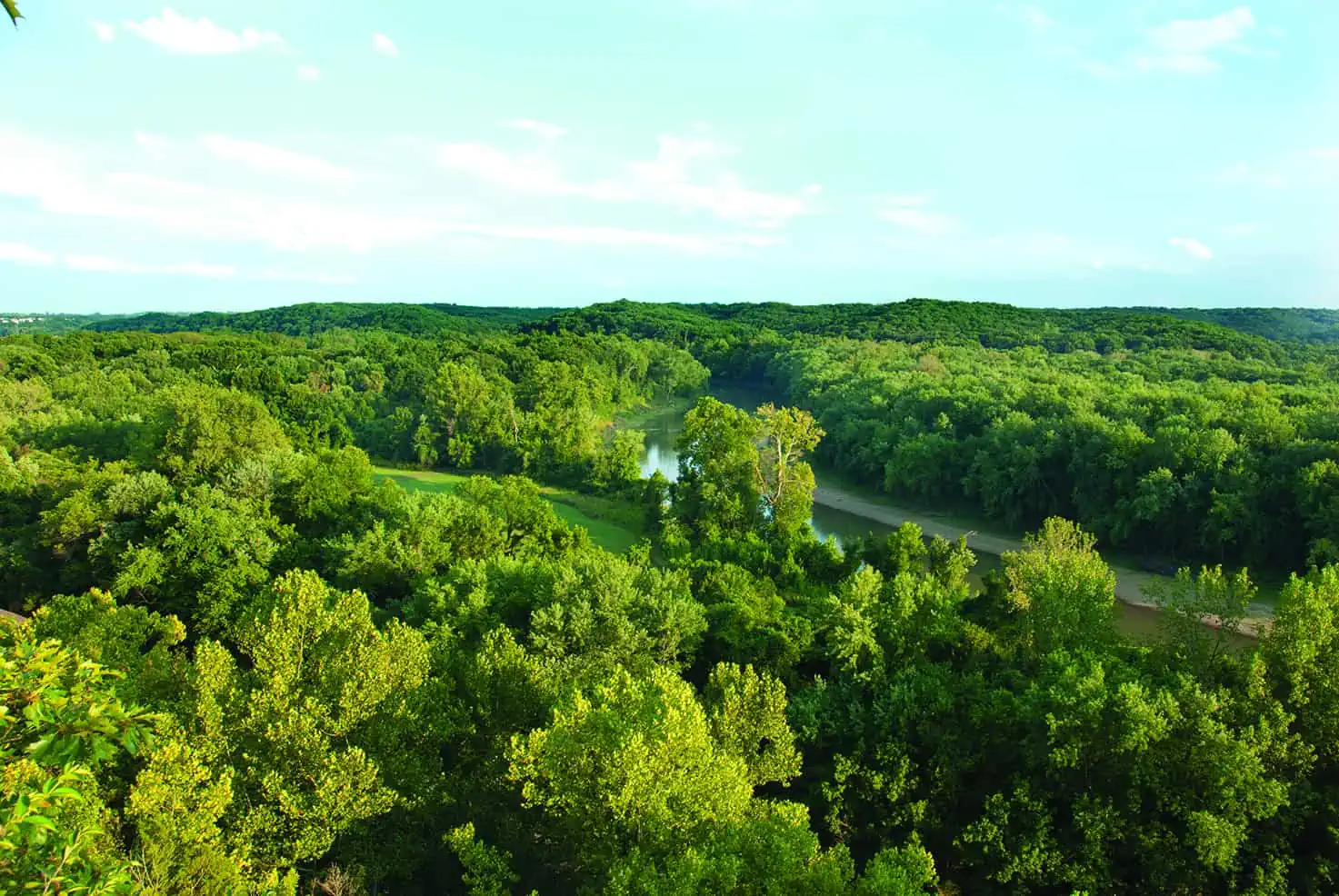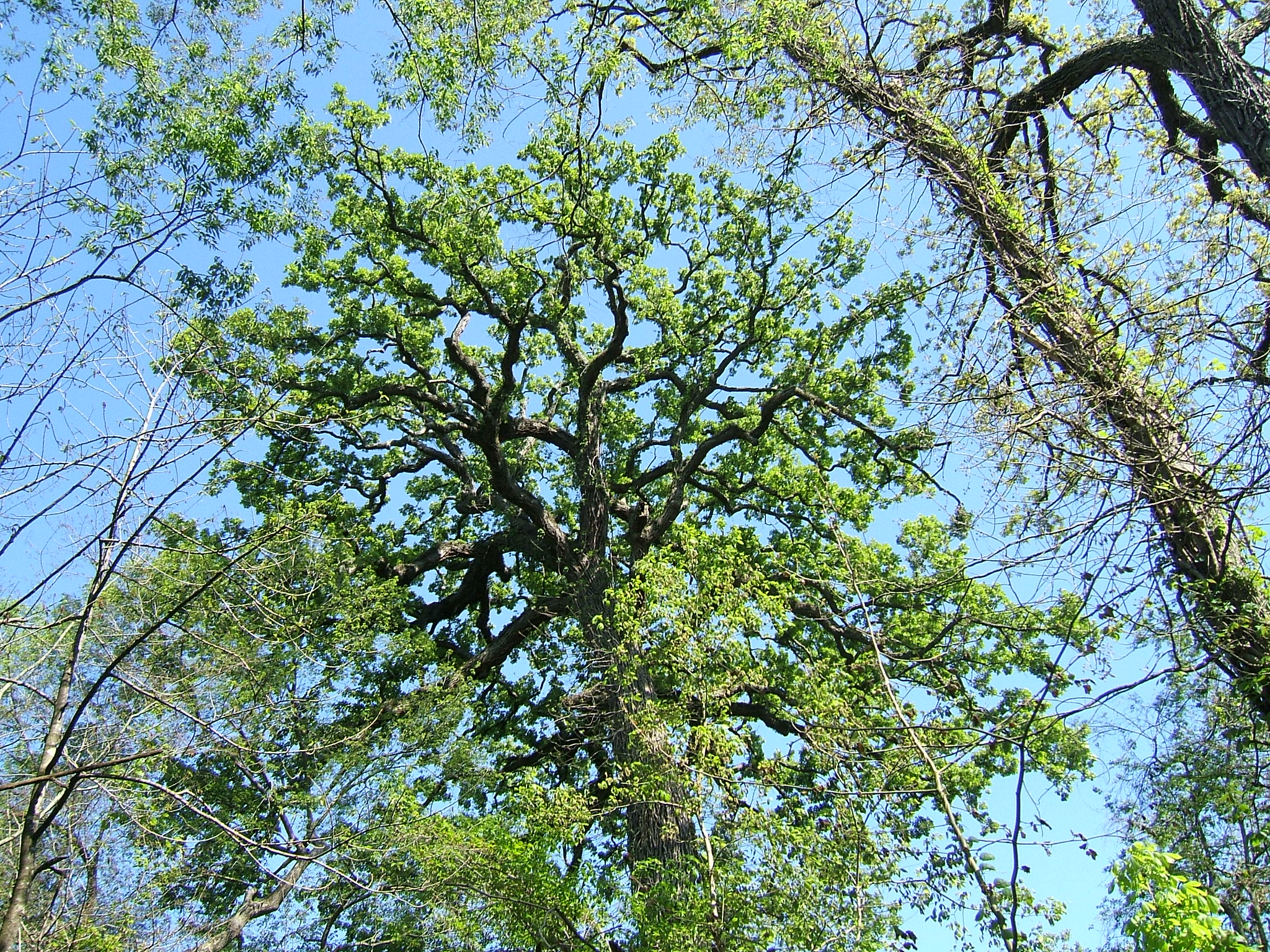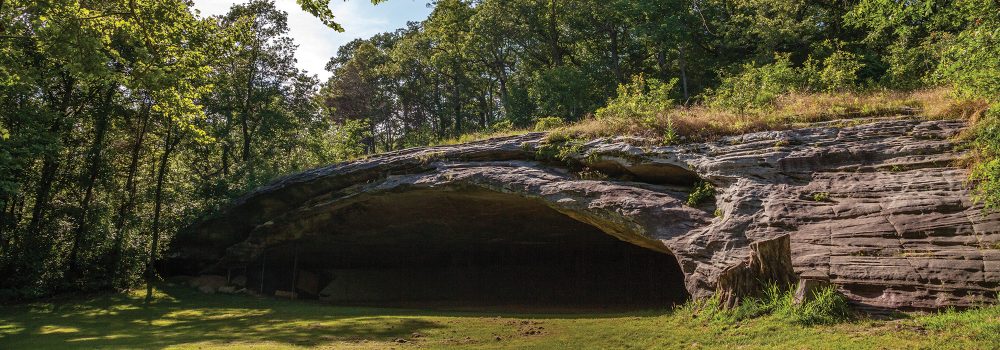Pomme de Terre State Park has a lake that offers swimming, skiing, boating, and fishing. Northern muskies have been stocked in the lake and some real lunkers have been caught. The camping is perfect, there are 240 sites to choose from, and there are lots of trails to hike.
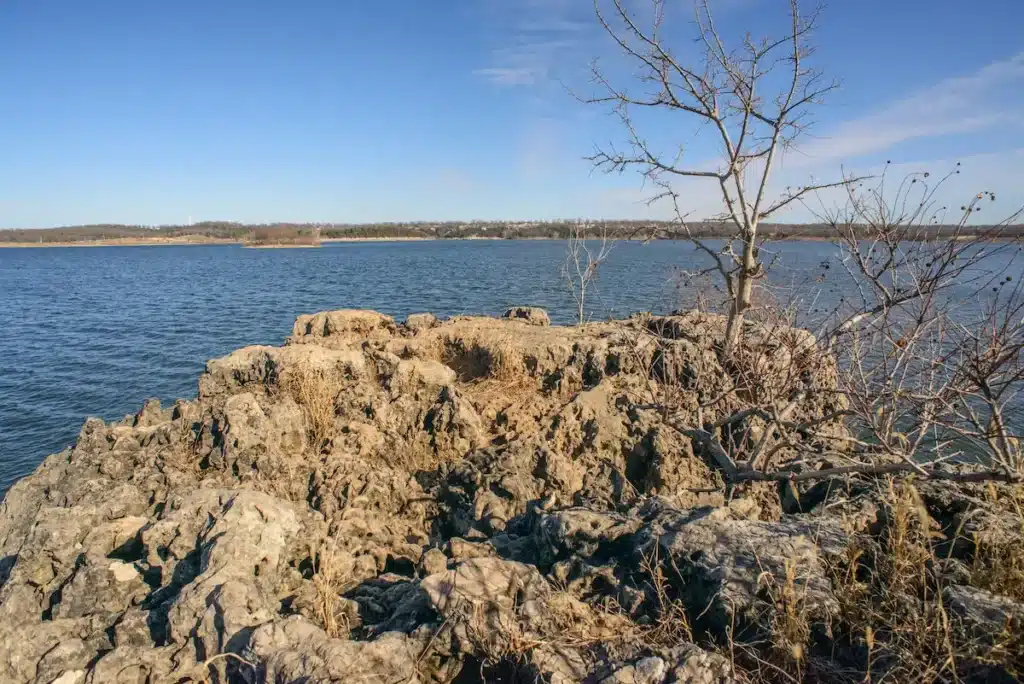
BEFORE THE FIRST WHITE SETTLERS came to southwest Missouri, wandering French trappers and traders had visited and explored the area’s many beautiful rivers, including one they apparently named for a tuberous plant that grew in the vicinity and fed the local American Indians. The plant might have been the widespread groundnut or American potato bean (Apios americana) or the now rare prairie turnip (Pediomelum esculentum), also known as Indian breadroot or wild potato. Potato in French is pomme de terre, which means apple of the earth, and thus a fine western Ozark river was named.
For thousands of years, American Indians lived along the river. They left evidence of their passing not only in the usual middens (refuse from their campsites), but also in some intriguing burial cairns built of stone. The Indians have been gone a long time now, and the few wandering French were replaced in the 1820s and 1830s by aggressive settlers from the hills of Tennessee and Kentucky. An old history book describes them: “Democrats of the Andrew Jackson type—men who partook more of the stern nature of the old hero of New Orleans; resolute, fiery, and unconquerable by nature.” Inspired by Jackson’s nickname, Old Hickory, these folks named their county Hickory, and they called their county seat Hermitage, after Jackson’s beloved Tennessee homestead.
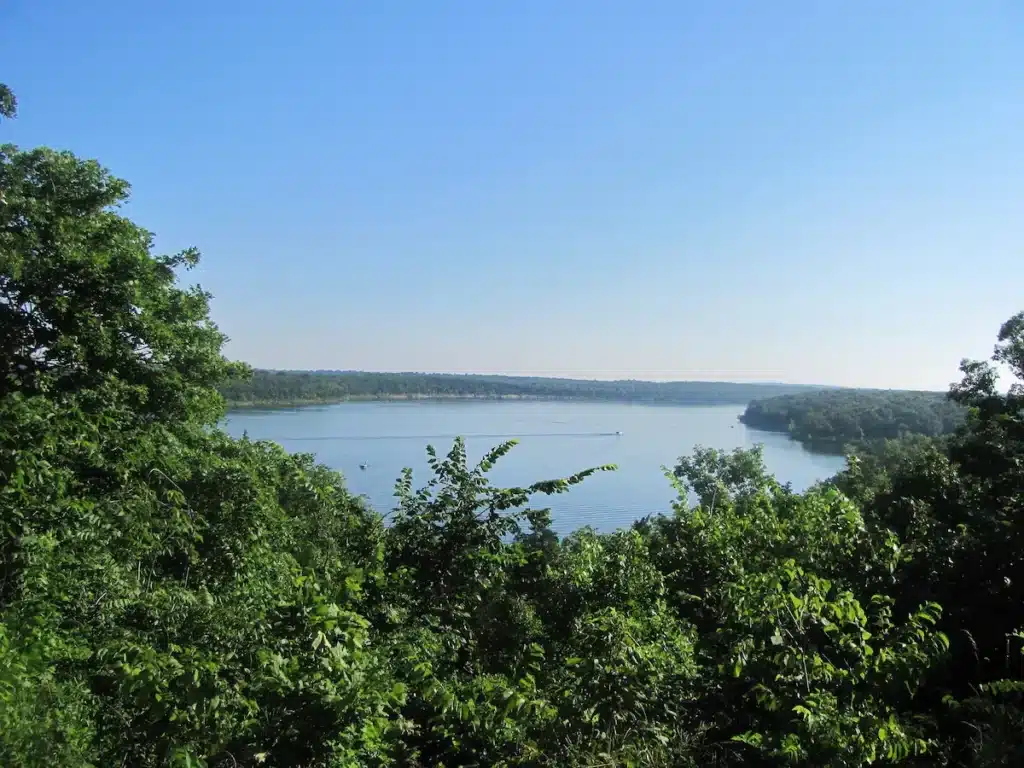
What we find today at Pomme de Terre is not a river but a remarkably attractive, clear lake of some 7,800 acres dating from the 1960s, compliments of the Army Corps of Engineers. The state park at “Pommey”—as the locals know it—consists of 735 acres in two sepa- rate parcels, one on the Hermitage side, the other on a peninsula accessible from the south, or Pittsburg, side of the lake.
The emphasis at Pomme de Terre is on water recreation, and the park offers a setting of quiet, usually uncrowded, beauty. The two park units are separated by several miles of road and function almost inde- pendently. Each has a full set of facilities for visitors. The park has more campsites than any other Missouri state park, over 240. The Pittsburg area also offers an alternate camping experience with its fabric-covered yurts. Part of the reason that camping is popular at Pomme de Terre is the shoreline location that many of the sites enjoy—bacon seems to smell better frying here in the early morning when its aroma mixes with the fog off the lake. Both campgrounds offer nearby beaches and fine swimming.

Photo by Scott Myers
Pomme de Terre also offers a fishing opportunity unique in Missouri. Some time ago, northern muskies or muskellunge were stocked in this Ozark lake; the species survived and now provides exotic sport for those who seek this large and unusual fish, which is native to the northern Great Lakes region. A number of real lunkers have been taken. A marina consisting of a camper store and grill offers boat, equipment, and slip rentals.
Located in the western Springfield Plateau section of the Ozarks, the land around the lake is rolling rather than mountainous, and the woodlands show the influence of the prairies of the nearby Osage Plains to the west. Today, park staff use prescribed burning to unveil a landscape once dominated by ancient 350-year-old post oaks. The trails and picnic area of the park’s south side are an outstanding outdoor classroom where each spring visitors can witness a renewal of this once widespread oak parkland, now replete with wildflowers and rich prairie grasses. There is also a trail to the ridge-top earthen burial mounds and rock cairns of the Native Americans who occupied this area. Excavations of several of the mounds have revealed materials from the Late Woodland period (AD 500 to 1000), while materials in the rock cairns are from the later Mississippian cultural tradition.
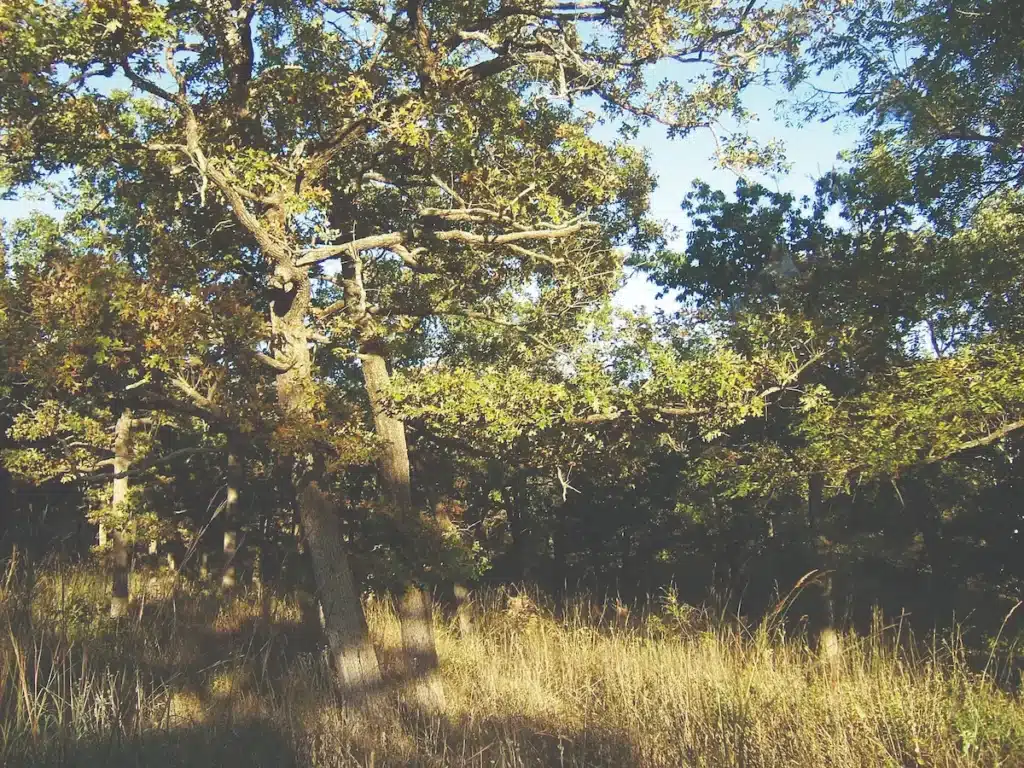
Photo by Allison Vaughn
All in all, Pomme de Terre, with its evocation of French traders and Native Americans who roamed the prairies and oak woodlands, is a pleasant park that offers an idyllic setting for a family camp-out.
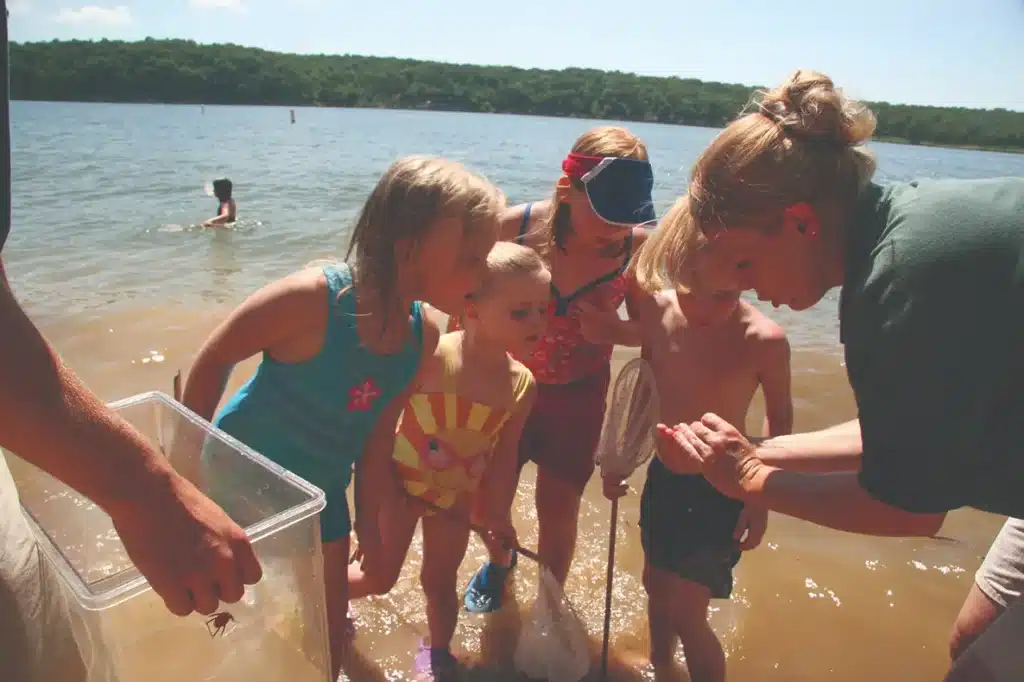
Photo by George Denniston
Pomme de Terre offers a fishing opportunity unique in Missouri. Some time ago, northern muskies were stocked here; these fish, native to the northern Great Lakes region, survived and now provide exotic sport. Some real lunkers have been taken.

POMME DE TERRE STATE PARK • ROUTE 64B SPUR, PITTSBURG, MISSOURI
Order Missouri State Parks and Historic Sites book here.
Read about more great lakes in Missouri here.
Related Posts
Castlewood State Park
Castlewood State Park has more than thirty miles of hiking and biking trails, eleven of which are open to horseback riders. Experience the feel of a mature floodplain forest with its silver maple, box elder, black willow, white ash, sycamore, slippery elm, and hackberry. Bring a picnic and enjoy the beauty of this park.
Get Out and See Big Oak State Park
You have got to see these trees. Big Oak Tree State Park is home to one national champion, a pumpkin ash, and three state champion trees, overcup oak, sweetgum, and persimmon. The ancient cypress are awe inspiring. The park is also a bird watchers dream with more than 150 known species chirping from the trees.
Hiking Graham Cave State Park
Head over to Graham Cave State Park to walk in the footsteps of early Missourians.

